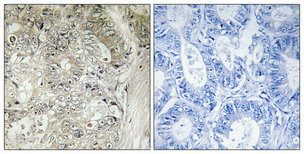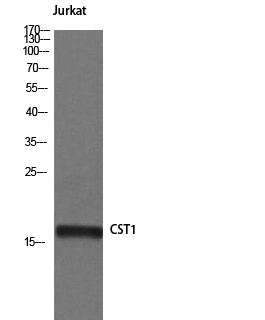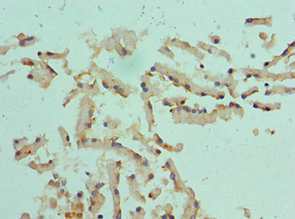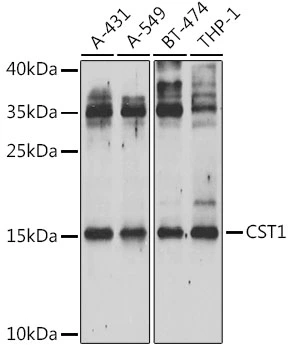
IHC-P analysis of human colon cancer tissue using GTX34332 Cystatin SN antibody. Negative control (the lower left coner) was secondary antibody only. Antigen retrieval : Tris-EDTA, pH8.0 under high-pressure and temperature Dilution : 1:100
Cystatin SN antibody
GTX34332
ApplicationsWestern Blot, ImmunoHistoChemistry, ImmunoHistoChemistry Paraffin
Product group Antibodies
TargetCST1
Overview
- SupplierGeneTex
- Product NameCystatin SN antibody
- Delivery Days Customer9
- Application Supplier NoteIHC-P: 1:100-1:300. *Optimal dilutions/concentrations should be determined by the researcher.Not tested in other applications.
- ApplicationsWestern Blot, ImmunoHistoChemistry, ImmunoHistoChemistry Paraffin
- CertificationResearch Use Only
- ClonalityPolyclonal
- Concentration1 mg/ml
- ConjugateUnconjugated
- Gene ID1469
- Target nameCST1
- Target descriptioncystatin SN
- Target synonymscystatin-SN, cystain-SA-I, cystatin 1, cystatin SA-I, cysteine proteinase inhibitor, type 2 family, salivary cystatin-SA-1
- HostRabbit
- IsotypeIgG
- Protein IDP01037
- Protein NameCystatin-SN
- Scientific DescriptionThe cystatin superfamily encompasses proteins that contain multiple cystatin-like sequences. Some of the members are active cysteine protease inhibitors, while others have lost or perhaps never acquired this inhibitory activity. There are three inhibitory families in the superfamily, including the type 1 cystatins (stefins), type 2 cystatins and the kininogens. The type 2 cystatin proteins are a class of cysteine proteinase inhibitors found in a variety of human fluids and secretions, where they appear to provide protective functions. The cystatin locus on chromosome 20 contains the majority of the type 2 cystatin genes and pseudogenes. This gene is located in the cystatin locus and encodes a cysteine proteinase inhibitor found in saliva, tears, urine, and seminal fluid. [provided by RefSeq, Jul 2008]
- Storage Instruction-20°C or -80°C,2°C to 8°C
- UNSPSC12352203






